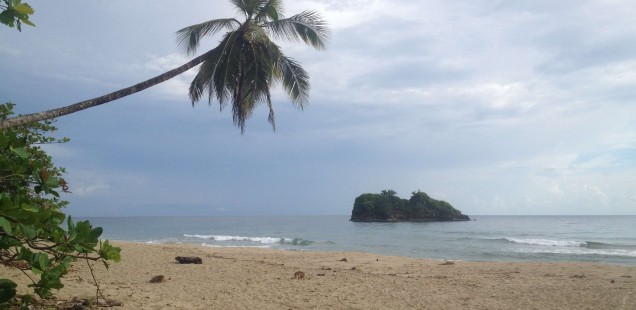
The Complete List of Reasons Why You Shouldn’t Visit Limón
I had been meaning to write about our trip to Costa Rica’s Caribbean coast for a while. It sounds laughable to me even as I’m composing this thought (and even more laughable to you if you’re reading this in the midst of your busy schedule of working and running your kids to practices, games, and recitals), but I somehow didn’t find the time until now.
Throughout our travels in Costa Rica, when we’ve told just about anyone we’ve met outside of Jacó that we live in Jacó, the reactions have ranged from a disapproving look to an outright shudder. If they’re candid enough, the gist of what they typically ask is, “Isn’t that a place rife with nightlife and crime, more suited for bachelor parties than for a family?” Residents of Jacó get somewhat annoyed by these types of questions because they know the assertions to be untrue (or at least overly simplistic). So, I found the reaction of people who live in Jacó, upon us telling them we intended to spend time on Costa Rica’s Caribbean coast, to be quite ironic. Basically, their sentiments boiled down to this, “It is a scary place with lots of violent, black people.”
I understand that ideologies, governmental structures, and cultures differ, but I always start from the premise that, at birth, people are more similar to each other than they are dissimilar. I don’t conclude this out of some altruistic desire to be “politically correct”. I conclude this based on science. Thus, when I am told that a large component of any group engages in a behavior that diverges from the norm, I rarely determine it’s because that group is wired differently from the rest of us. Instead, I conclude it’s because their specific conditions have strongly influenced the outcome.
That’s not to say I don’t think individuals should be held accountable for their actions. They should. But it is to say that history matters. For example, in the U.S., people mention the traditionally high percentage of Irish-American police officers and fire fighters as if their DNA somehow chose this profession for them. Meanwhile, U.S. history tells us those jobs happened to be the ones that were initially available to new immigrants to the U.S. from Ireland. Along the same lines, without yet knowing the facts, I figured the people of Costa Rica’s Caribbean coast had their paths dictated by a particular set of circumstances, and not by their “nature”.
In discussing “Limón”, it is first helpful if I step back and establish exactly what I’m talking about. Costa Rica has 7 provinces, which are broken down into 81 cantons. Within those 81 cantons lie 473 districts. For example, we’re currently living in the province of Puntarenas, the canton of Garabito, and the district of Jacó. Like Puntarenas, Limón province is broken down into cantons and districts. Confusingly enough, the city of Puerto Limón exists in the canton of Limón, which exists in the province of Limón. Thus, if you’re from the Puerto Limón, you’re technically from Limón, Limón, Limón, Costa Rica.
I point all of this out because the first question we had when we heard Limón was so treacherous was, “Which ‘Limón’?” Is the whole province deadly, or is it just certain neighborhoods within specific cantons? Getting no clear answers and not wanting to put my family in danger if there were indeed legitimate concerns, I began to research newspapers and blogs about Limón. At long last, I found crime statistics. As we all know, however, statistics can be tricky. I discovered articles indicating the Caribbean has the highest crime rates in Costa Rica, and others indicating where we’re living right now does.
My interest was somewhat piqued when I stumbled upon a blog where the writer mentioned she was an innocent robbery victim in Limón. That sounded scary. As I read further, however, I realized the robbery actually involved her trying to buy drugs from a shady character at 2:00 am. The fact that we wouldn’t find ourselves in that situation, in addition to the other research we had done, allowed us to conclude we’d be fine.
As we later discovered, many of the people warning us of the dangers of Limón not only didn’t know which region of the province they were referring to, but had never spent a minute in any part of the province themselves. In other words, they were mainly repeating what they had heard about it from others. Not only is it unwise to mindlessly parrot what someone might have told you without thinking about it yourself, it’s probably even less wise to do so if what you’re repeating might be rooted in racism.
Costa Rica’s Caribbean coast has an especially fascinating history. The indigenous Bribri people populated the region for at least 10,000 years before Europeans eventually made their way there. In 1502, a hurricane forced Christopher Columbus to anchor his damaged ships off the coast of Costa Rica on Uvita Island. He and his crew ventured onto the mainland into what is present day Puerto Limón. Despite that initial landing, the Caribbean coast essentially remained ignored by Europeans for a few hundred years in favor of Nicaragua, Panama, and Costa Rica’s central valley.
Then, in 1871, the Costa Rican government determined it could sell more coffee, its main export crop, if it could open an Atlantic port. Until that time, coffee was transported by oxcart to Puntarenas, the country’s primary port. Since Puntarenas was located on the Pacific side, ships had to sail all of the way around South America to make the journey to Europe (the Panama Canal wasn’t opened until 1914). The notion was to make Limón the primary port due to its excellent Atlantic location. Thereafter, ships would be able to go back and forth to Europe from Costa Rica with relative ease. The problem, however, was that a railroad would need to be built to transport the crops from the San Jose area, where the coffee beans grew, to this new Atlantic port.
The Costa Rican government contracted with a U.S. citizen named Henry Meiggs to build the railroad. Although he died during its construction, the railroad was completed by his nephew, Minor C. Keith. To help fund the project, Keith set up banana plantations alongside the tracks. These banana plantations, which were initially somewhat of an afterthought, would eventually become the United Fruit Company, which many years later turned into Chiquita Brands International.
As for the railroad itself, the construction of it proved to be enormously challenging. Costa Rican, Chinese, and Italian laborers fought torrential rains, thick jungle, and tropical diseases as they worked. With thousands of deaths occurring, including the deaths of three of Keith’s brothers, upwards of 10,000 Jamaicans and Bajans (Barbadians) were brought in to finish the job. After completion of the railroad in 1890, a significant number of the laborers stayed in the Limón area to work on banana plantations and cacao farms. What remains from this history is Costa Rica’s most culturally diverse province. Arguably, Limón has more in common with other Central American, Afro-Caribbean areas like Bluefields, Nicaragua and Livingston, Guatemala than it does with the rest of Costa Rica.
After decades of transporting coffee and bananas, the railway between San Jose and Limón was put into use as a public means of transportation. What became known as the “Jungle Train” transported many people over the years, but eventually fell into disrepair. Given the region’s rain storms, mudslides, and earthquakes, it proved challenging to maintain. As a result, the Jungle Train is now a distant memory.
Until 1948, not only did the Costa Rican government not recognize these Afro-Caribbeans as citizens, it restricted their movement. They were not permitted to go outside of the Limón province. As a result of this discrimination, the coast of the Limón province developed its own distinct culture. It has a history, cuisine, and even a language unto itself. The people there speak Limónese Creole (which is a dialect of Jamaican Creole English) in addition to Spanish. In fact, we found the folks in Limón to be more bilingual than most other citizens of Costa Rica.
As we set out, our plan was to briefly visit the city of Puerto Limón, and then to stay overnight in Cahuita and Puerto Viejo, both of which are towns in the Talamanca district. Like a lot of drives in Costa Rica, a destination that seems near in distance ends up being far in time. There are only about 200 miles between Jacó and Limón, but the trip took us roughly 7 hours. Nonetheless, there is something satisfying about driving from the Pacific Ocean to the Atlantic Ocean in one day (I guess it’s technically the Caribbean Sea). The drive itself is long, winding, and extremely slow-going at times. Because the trip, however, literally takes you across the country from sea level, up through the dense mountains, and then back down to sea level, the stunning views justify the journey.
We happened to be driving through Puerto Limón on the tail-end of its annual Columbus Day celebrations, which exude a carnaval-like atmosphere. As the second largest city in Costa Rica after San Jose, Puerto Limón definitely has the feel of a true city, and all of the good and the bad that comes with that. After a long day of traveling and a strong desire to reach our destination, we didn’t spend much time in Puerto Limón. Instead, we enjoyed the scene and pressed on to our hotel near Cahuita.
After spending our first night in Cahuita, I woke up to a beautiful sunrise over the Caribbean Sea. I’m embarrassed to admit I didn’t realize this sooner, but it dawned on me then that we’d been watching the sun set each day over the Pacific Ocean in Jacó, but not the sun rise. An early morning sunrise over the ocean was a welcome change. Notice that I said, “I” experienced this. Heather, of course, never witnessed this wonder of nature. To say she’s not a morning person is a bit of an understatement. Before she drinks her first cup of coffee, she doesn’t know her name, gender, where she is, or who the strange people around her are. As each new morning gently unfolds, it’s mesmerizing to watch her discover she’s a woman named “Heather”, we’re in Costa Rica, and that we’re her loving family. In any event, Cahuita is a tiny town with a well-maintained national park in it. If you’re looking for a quaint, sleepy place to get away from it all, this is it.
Even though we had heard mixed reviews of the Sloth Sanctuary, we decided to visit it since we love sloths and it is in the area. Our conclusion was that we’re absolutely glad we went, but we can understand why some of the criticisms exist. Heather and I enjoyed the detailed, academic approach the staff took in educating us about the animals. It felt more like school to Atticus and Maddie rather than an enjoyable adventure. Another critique we had heard was that it is too focused on the financial component. I’m sure the facility is not cheap to operate, so I’m not going to knock it for that. At the same time, in comparison to other activities in Costa Rica, it’s not an inexpensive outing.
While on the Caribbean coast, we spent most of our time in the tourist town of Puerto Viejo. We loved this place. The area has a Caribbean vibe replete with vibrant colors, stunning beaches, howler monkeys, and good food. We don’t mind the cinnamon sand of Jacó, but if your idea of an idyllic beach is one with white sand (stop being so racist), then the beaches south of Puerto Viejo are for you. Whether it’s Cocles, Chiquita, Uva, or Manzanillo, they have light-colored shores and crystal clear water.
As I’ve mentioned before but failed to articulate, Costa Rica’s coastal regulations state that no building can be constructed any closer than 50 meters above mean tide. As a result, the access to beaches here is different from many in the U.S. The path from one’s hotel to the water might be undeveloped jungle, as opposed to kitschy shops selling obnoxious T-shirts. In Puerto Viejo, we counted 27 huge spiders on just one, short walk through the woods to Cocles beach. Add in the boutique hotels and funky shops and you have a place with some real character.
If you’re actively following the blog, you might have noticed that I haven’t talked much about food the whole time we’ve been here. That wasn’t a conscious decision. In fact, I just noticed this myself. I guess it was a subconscious reaction to having owned restaurants for years and always worrying about, talking about, and taking pictures of our own food. As I analyze it right now, I think I didn’t want to engage in that behavior again for a while. Besides, there is an embarrassing excess of people who talk about and post pictures of food all over the Internet. Having said that, I would be remiss if I didn’t note that one of the components we enjoyed most about Puerto Viejo was the cuisine.
Food tells a story about a place. Even if you didn’t know the background I laid out above and you visited the Caribbean coast, you would wonder why the cuisine there tastes different than it does in the rest of Costa Rica. Of course, the answer is because of its unique history. Because I’m partial to Caribbean food anyway, I happen to think the best food in Costa Rica is in the Limón province due to its Jamaican roots.
As I’ve stated in previous posts, Pura Vida is a real thing in Costa Rica and we love it. Nonetheless, it seems like neither the phrase nor the feeling is as prevalent in Limón. There is a sense there that this province has been intentionally neglected and wrongfully maligned. We had excellent, in depth conversations with residents who sincerely feel like the historical isolation and racism directed towards the region still persist to this day. Although some of those opinions arguably bordered on paranoia, as the saying goes, just because you’re paranoid doesn’t mean they’re not after you. So maybe these folks are on to something.
The indigenous Bribri people are another captivating component to this area of Costa Rica. Groups like the Bribri suffered the same fate as Native Americans in other parts of the Americas, as their communities were alienated and left behind. Fortunately we had the opportunity to visit two cacao farms operated by Bribri families.
Heather and I have done tours like this in other countries, and I always feel conflicted. On one hand, we look at it as supporting folks who traditionally haven’t reaped the benefits of tourism dollars. On the other hand, it seems somewhat voyeuristic. I don’t know if they resent the fact that tourists like us pay to invade their private lives, or if they’re happy to share their experiences. Maybe it’s a bit of both. Although we typically decide the good outweighs the bad, I’m always left with a little sadness after these encounters.
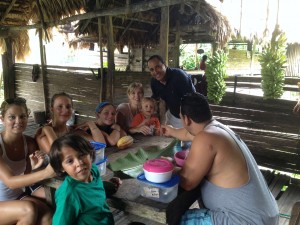
A most pleasant surprise during this chocolate tasting was realizing two tourists in our group were from the very town in Germany I lived in as a child.
On this particular tour, two families let us into their homes to learn about their lives, Bribri history, and cacao farming. Not only did we see firsthand how cacao beans are converted into chocolate (and even participate in the process), but we also learned about medicinal uses for other plants on the properties. People are intelligent in so many different ways. Some of these individuals might not have had a formal education, but their cleverness was on display through the knowledge they’ve passed down from generation to generation, and also through the readily apparent ingenuity they possess to survive in such a demanding environment. At the end of the tour, we sat in their home for a tasting of their homemade chocolates mixed with other local ingredients such as ginger, coffee, and coconut. Heather and Maddie particularly enjoyed the chocolate tours, and how the homemade Costa Rican chocolate contains less milk and is more unrefined.
Our drive back to Jacó was a reminder that the Costa Rican government got it right with respect to its vision of Limón as a port city. To this day, Puerto Limón remains the busiest port in the country. I’ve never seen more 18 wheel trucks hauling loads on a two lane road in my life. That is part of the reason the journey takes so long.
Would we recommend visiting the Limón province? Definitely. Although areas within it differ from one another, the region is beautiful, friendly, diverse, and real. What it isn’t is extremely dangerous. Yes, crimes occur there. But, just like anywhere else, a way to minimize your chances of something happening to you is to not be out in the wee hours of the morning engaging in illegal activities. Incidentally, when we told people in Limón that we lived in Jacó, we found it rather amusing that they were taken aback since they had heard it was dangerous there. Of course, most had never been.
In the end, not only did we find Limón to be filled more with beauty than with peril, we liked it above and beyond a number of other places we’ve visited in Costa Rica. Accordingly, the title of this post isn’t wrong. The complete list of reasons you shouldn’t visit Limón is a list of exactly zero.
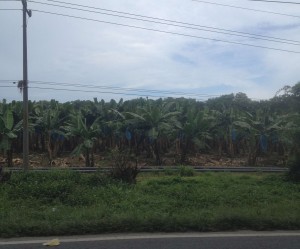
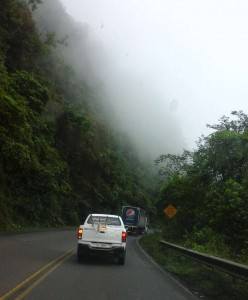
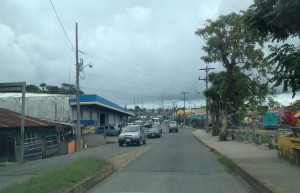
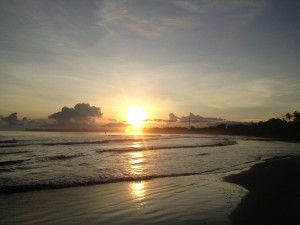
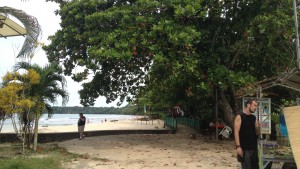
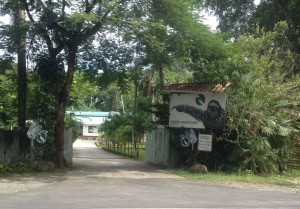
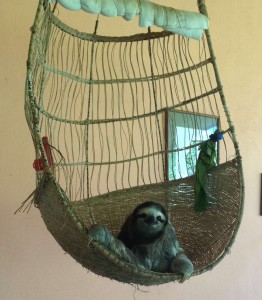
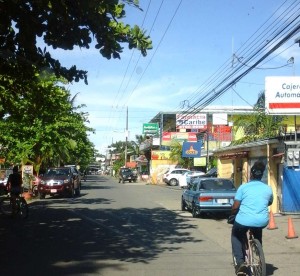
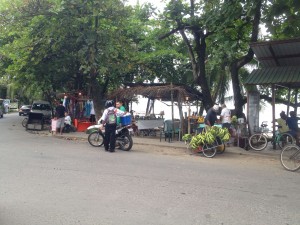
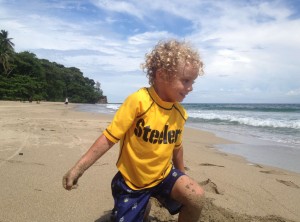
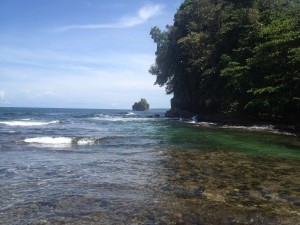
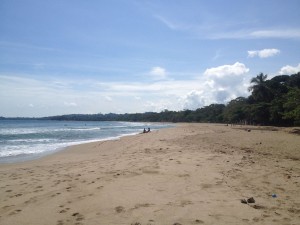
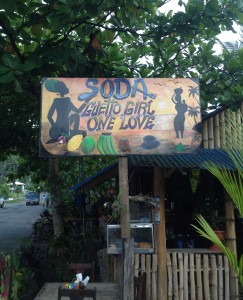
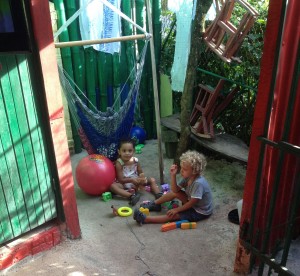
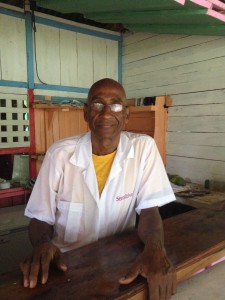
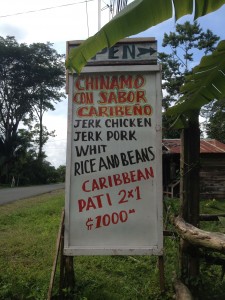
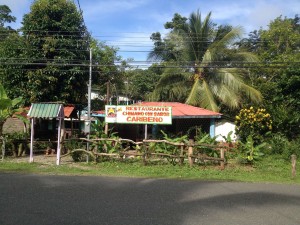
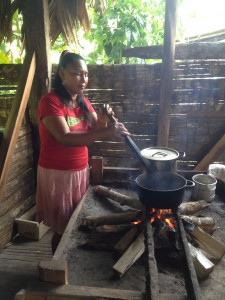
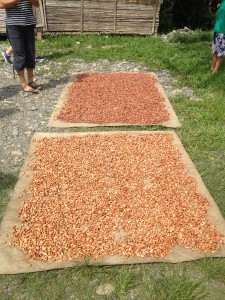
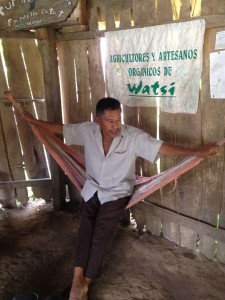
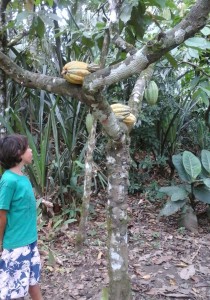
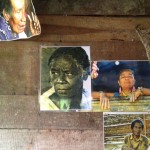
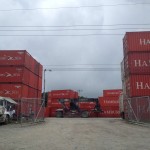
Awesome entry Jamie! Very jealous of all of the experiences you guys have had. Atticus and Maddie are lucky to have this opportunity.
Given the Jamaican component, I thought this post might be up your alley. I’m glad to hear it met your expectations. We’re hoping the kids will be positively changed forever by this experience.
Captivating post Jamie. …Reading your blog was one of those things that I kept remembering to do at those exact moments when doing it was impossible, such as driving in the car. I have Heather to thank for putting it in front of me when I was actually at the computer! Once I started reading, I couldn’t stop. Jamie, you certainly have a gift with words!
Thank you. I’m glad you were able to find the time to check it out. I’m sure you can relate to some of the experiences we’ve had along the way. We miss you in Spanish class. ¿Todavía lo estás estudiando?
I always enjoy the history lesson I get when I read your blog. I think I would love visiting Limon. Just curious…do many cruise ships stop in Limon?
Mom
I believe a few cruise lines have ports of call in Puerto Limón. Because the city itself is so industrial, however, the beaches right there are not the best for swimming. You’d need to go north to Playa Bonita or south where you’d have your pick of a number of other gorgeous and clean beaches like Cahuita, Puerto Viejo, Cocles, Punta Uva, or Manzanillo.
Another great entry! Glad to see you and your family are doing well!
Thanks, Austin. It’s nice to hear from you. We feel so fortunate to have had this life-changing experience.
Great piece, as a jamaican i visit costa rica evey year and there is no place like limon love it..
Thanks so much for your comment. I’m happy to hear that there are Jamaicans who visit this area of Costa Rica. It must be neat for you to see the influences your country has had on the region. We sincerely enjoyed learning about the history of Limon and appreciated how culturally distinct it is from other parts of Costa Rica.
What a great post m so interesting and full of information , it may seem a strange thing to say but I was hoping there was a down side to going to Limon lol , as four of us ( women ) are going on an assignment to teach as there has been a great request for bible study in that area , I was greatly looking forward to going to that area , Porta Vegio but we also received a request for needs great in San Isidro , which my other companions expressed a desire to go to , so San Isidro it is ,, but I now feel thanks to your post iv been to a degree to Limon ,
If you have any information on this area I’d love to hear it ,
Thanx , Enjoy your Travels .
Costa Rica has so many beautiful areas, it’s nearly impossible to pick the “best” place to go. We had the chance to spend time in all 7 of the country’s provinces, and there’s no place that I would tell someone not to visit. Our time in the San Isidro area was limited. In fact, we were in that canton primarily to attend the annual Palmares Festival. That, in and of itself, was quite an experience. The great thing about the country is that you’re likely to be surrounded by natural beauty and friendly people just about anywhere you choose. Among the factors to consider are climate and whether you prefer the mountains or the coast. Enjoy your experience. Let me know where you end up and how you like it.
Brilliant article. Tired of reading the drivel from eople from other less pretty parts of the country who know nothing sbout the place except the biased rubbish in the press. Love Limon.
Thanks, Natalie. It is an interesting part of the country full of a lot of wonderful people.
Jamie Wallace,
I will start by saying thank you.
Your understand of history and culture was impressive, I was burned in Port Limon but lived in the US and become an American Citizen.
Because of you I can share this information with my family and friends.
I will be planning a visit pretty soon.
Thanks and God bless.
Thanks, Armando. You were born in a beautiful place with a fascinating history. I hope you are able to make it back soon.
Hi, I started reading this in angry, bitter emotions and hoping to write something against you…as I continue reading the entry wondering when you exactly make the bad list of things of my hometown…ended up laughing on “…zero” things on the list…Then I realized that I need to say thanks for the blog about Puerto Limón…I was born and raised there so as you depicted at the begining I proudly can say to anyone I am from Puerto Limón, Limón Limón…thanks again…
Thanks, Sergio. It’s a really unique place full of warm people. We truly enjoyed the brief time we spent there and hope to return some day soon.
Great read! Has anything changed since you wrote this blog? Would you still say it is safe?
Thanks, Wayne. There was nowhere in Costa Rica we ever felt unsafe. Likewise, there was nowhere in Costa Rica where we had any serious issues. Perhaps we were just lucky. Or perhaps having spent time in countries known to be more dangerous than Costa Rica gave us the wherewithal to steer clear of problems. Regardless of the reason, we had 0 incidents in 13 months. I would not hesitate to visit the Limon region again with family in tow.
Thank you for this entertaining and informative post! I will be visiting Costa Rica in a couple of weeks; I chose Cahuita as the first place to see! I’m very excited to experience all that the area has to offer, particularly the friendly people.
From Cahuita, I’ll travel to Alajuela, Manuel Antonio, and Sámara before volunteering in Monteverde for three weeks. It’s my first time going to Costa Rica and I already look forward to repeat visits and exploration of other areas. Thanks, again, for your infectious enthusiasm!
Thanks, Cindy. How was your trip?
Hello,my wife sent me your article to read and I thought it was a good read ,it encouraged us to visit Limon. We are now in Guanacaste , and have already been to San Jose , thank you and your family for the non biased information , maybe might see you on our stay.
That’s nice to hear. I hope you had a wonderful trip.
Many thanks….well written but I think your headline might misinform people, who only read headlines. We are visiting CR next month for a month and will be spending Easter in Punta Uva. We have another week after that and might well just move down to Puerto Viejo, before heading back hom to the UK.
You are so right about people parrotting what others say. We were recently in Paris for a rugby match…the Stadium is near the working class suburb of St. Denis. The story went around the USA that St. Denis was now out of bounds to non-muslims and that sharia law has taken over there. A similar story went the rounds about Birmingham in the UK. 100% nonsense but people like to believe what fits their prejudices. We had a lovely afternoon in St. Denis, visited the magnificent cathedral where all French royaly are entombed, had lunch in a lovely friendly bar where we bantered with the locals and went off the the game.
To read feedback on St. Denis on TripAdvisor and such, you’d think it was a war zone. The reality of the matter is that the perspective of those who comment negatively is premised entirely on their racism….there are many non-white faces in St Denis and these people who report negatively are invoking their racism. I have also seen feedback that “there were poor people in the area”….well, honestly. I really don’t know why these people are allowed to wander without their carers and their medications.
Thanks, Sean. How was your trip?
Thanks for writing this article! I found it to be enlightening,honest and refreshing as I ‘m looking to write about the Atlantic/Caribbean area of Costa Rica, your blog opened my eyes. I’ll continue to read more about this beautiful area as I prepare to relocate to Costa Rica in the next 8 months.
I appreciate your feedback. I’m looking forward to reading your thoughts on the area.
Awesome read, I felt like I was there, I’m looking forward to visiting limon soon and would love to connect with my Barbadian relatives.
Thanks Jamie
Thanks, Angela. Let me know how your trip goes.
Thank you for the informative article. The history was fascinating. Is manzanillo safe to visit with a baby? There are several reports of tourists being robbed by a masked machete wielding man around 2017. Is that just to scare people away or real crimes?
We took basic precautions and honestly never felt unsafe anywhere we went. I understand your concern if you’re reading about a machete-wielding suspect, but I have no reason to think Manzanillo is particularly dangerous for tourists.
Excellent! Recently visited Puerto Viejo. Magical is the word that best describes it.
So, Jaco isn’t dangerous? Just kidding. Lol
Excellent review
Im headed to Puerto Viejo soon. My son is working as a volunteer on a banana /cocao farm in the foothills of Cahuita. Can’t wait to take it all in. Thank you for your blog.
Great article, but your story and adventures do not match its title. Thankfully!!! 😅
My husband and I traveled this small, beautiful country since the early 90s. After countless journeys on the pacific coast, we found ourselves in search of Puerto Viejo after a musician colleague of my husband’s shared a tune he wrote called Puerto Viejo. As luck would have it – we fell in love. Puerto was exactly what we wanted! Natural beauty, beautiful people, affordable prices, amazing, varied cuisine, and the ultimate Pura Vida.
We bought a home and had it for almost 15 years. We miss Puerto every day!!
Thank you for this great article!!!
You were trailblazers. What a great story. It makes perfect sense that Puerto Viejo holds a special place in your heart. Thank you for reading and commenting.
Great post. We had arrived today in Limon (Jan 2024) from a TUI cruise and did a visit to Veragua rain forest. We couldn’t help but notice the little houses encased in steel cages, barbed wire, chicken wire, like fortresses. It gave an indication that security was a high level priority and I wondered if anyone could sleep at night. Many houses were semi derelict so I imagine the inhabitants has nothing to steal.
However, having read your post and others I’m concluding that life in Limon is not that far away from many UK towns and cities where drug gangs fight each other, including shootings, and pretty much don’t bother anybody else.
Exactly. I hope your time in Limon was enjoyable and exceeded your expectations.
My interest in Costa Rica has grown ever since I learned recently that I have family there and that my grandmother, whom I never met because she died before I was born, used to travel between Jamaica and that country. I’m in touch with a cousin who lives in Limon and look forward to visiting soon. Your article has only increased that burning desire. Thank you.
Barry, please let me know how your visit goes.